I remember the first time my baby had a rash—angry red splotches appeared across her perfect porcelain cheeks and I FREAKED OUT. When I hauled us to the pediatrician, I was quickly greeted with a “newborn acne” diagnosis as well as a reassuring, “We get a lot of rash inquiries each day.”
I’m not surprised. It can be really troubling when a rash pops up and you don’t know what the hell it is, if it’s contagious, or if it needs medical attention. Rashes on infants usually fall into one of three categories:
- Infection: caused by virus, bacteria, fungus
- Allergic: caused by contact allergy or food/medication allergy
- Baby life: caused by hormone shifts after birth or baby lifestyle
So we thought we’d make a handy little guide of the most common ones you might see in a baby under one year old since I automatically assume every rash on my kids is alien agent orange or bubonic plague.
The fact is there are a bazillion types of rashes out there that your kiddo may get over the course of his childhood and anything that looks worrisome to you should get checked out by your pediatrician ASAP. You’re smart, you get it. Be prepared to report any other co-existing symptoms you may have observed, too, such as fever, itchiness, new food or meds, etc., because they are all part of the rash diagnosis puzzle.
Editor’s note: our apologies to people of color. Either you don’t get rashes (unlikely) or medical professionals don’t publish them (I have no idea why) because we couldn’t find consistent examples of rashes on different skin colors. Hopefully, this guide will give you an idea of what you are dealing with though. I also found an amazing Instagram account called Brown Skin Matters which features skin of color. I’m going to see if they will let me feature some here.
Types of baby rashes:

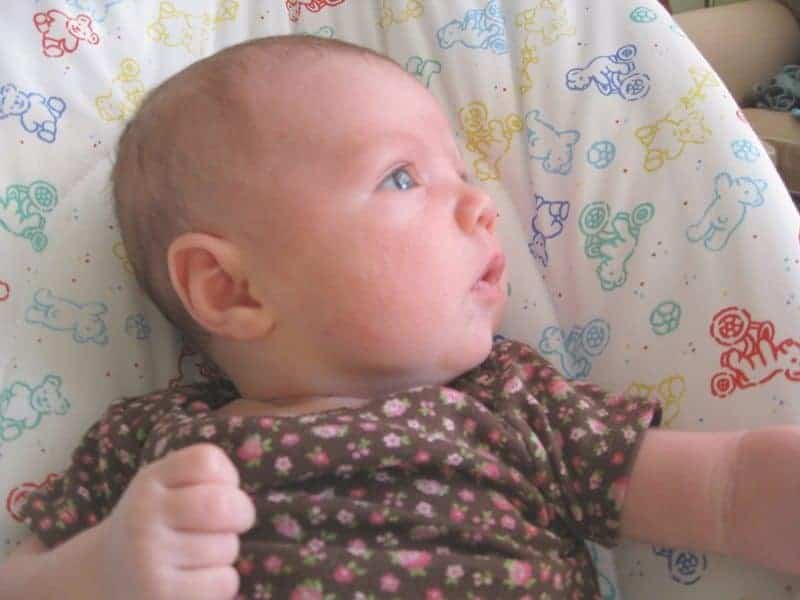
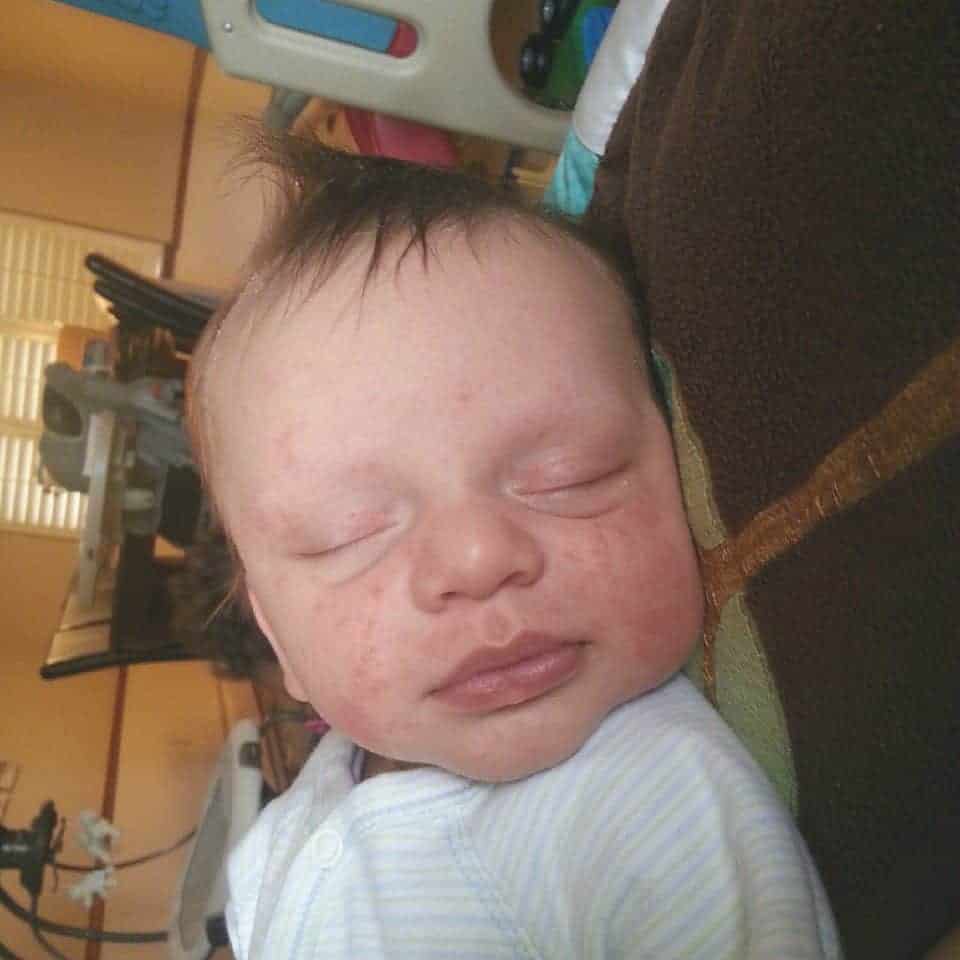
Baby acne
Baby Acne
Culprit:
Baby life
What does it look like?
Unless you had a blessed, blemish-free adolescence, you’ll probably recognize these red bumps with white heads as zits. Baby acne usually shows up on the cheeks, nose, and forehead, but can also be on the chest and neck. They show up when baby is around 3 or 4 weeks old and hang around for about a month.
Just before birth, hormones cross the placenta to help your baby’s lungs develop, but that transfer also stimulates the oil glands in your baby’s face.
What do you do?
You don’t need to put anything on the rash as it is just nature running its course (put the zit cream away) though some moms think the pimples look less irritated when breastmilk is applied.
How contagious is this sucker?
Not contagious.
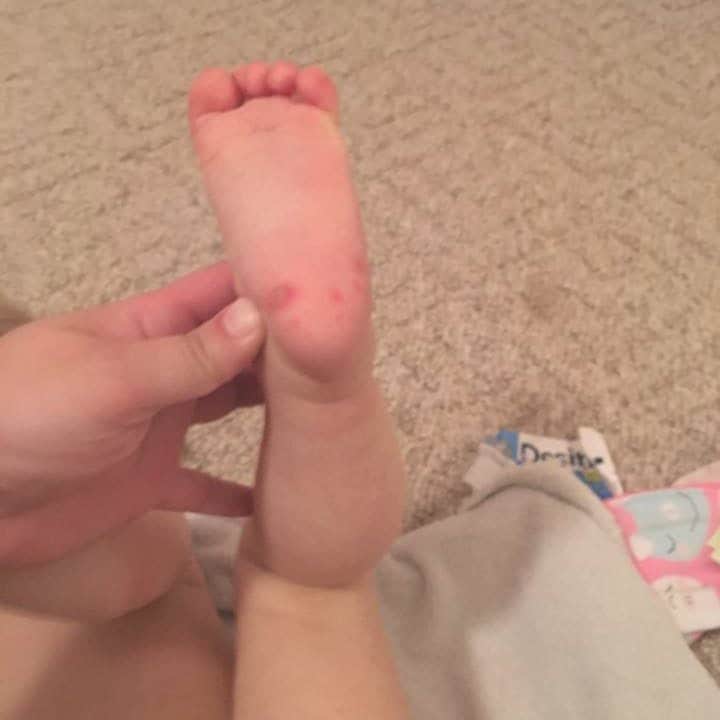
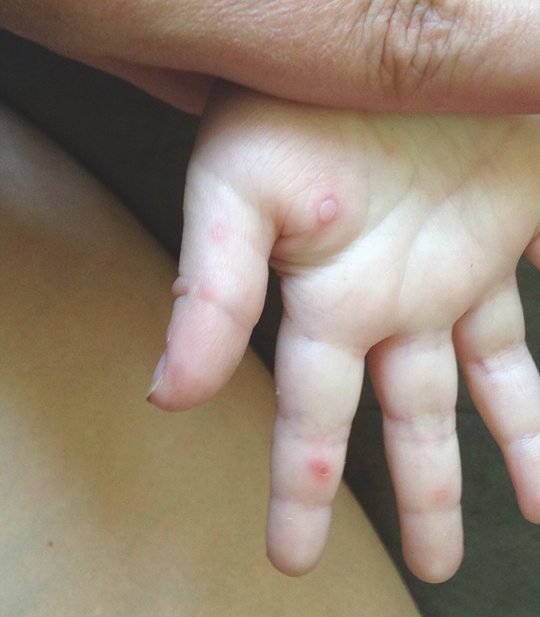
Hand foot and mouth
Coxsackie (Hand, foot, and mouth)
Culprit:
Virus
What does it look like?
This virus pops up in the summer/fall and causes these very painful ulcers in the back of the mouth, as well as painful sores on the palms and soles of the feet. (My kids have also gotten coxsackie and only had the rash in one of those three locations.) The rash is painful and it usually comes with a fever so, in general, you’ve got a pretty miserable baby on your hands.
What do you do?
Because this is a viral rash there is no treatment, you just have to keep baby comfortable and wait.
How contagious is this sucker?
Contagious via respiratory secretions and stool-oral transmission, so lots of hand-washing for you after diaper changes!
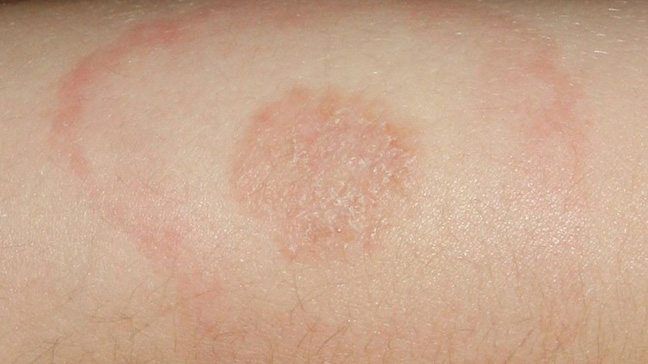
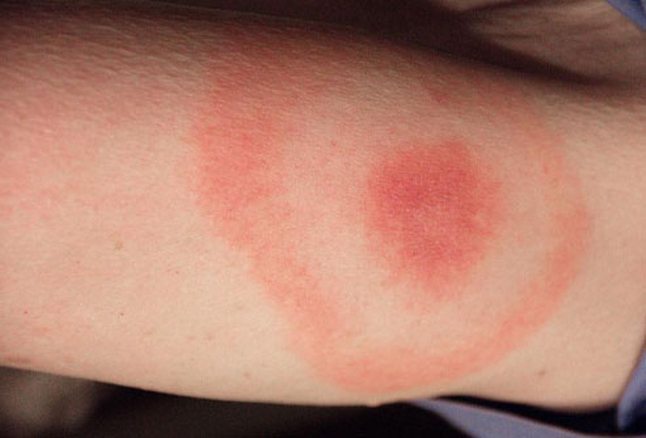
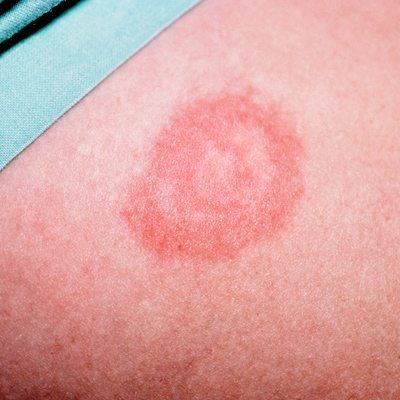
Lyme Disease
Lyme Disease
Culprit:
Bacteria
What does it look like?
Lyme is a bacterial infection spread by the bite of an infected tick. If one finds its way onto your baby and sinks in for a meal, your baby can contract Lyme Disease. Only 8-10% of people who get a black legged tick (or deer tick) bite end up getting Lyme Disease, probably because a tick has to be embedded for 24-36 hours before the bacteria is transferred.
The Lyme rash typically looks like a big bullseye but can also just be a big, round expanding rash at the bite site and it usually shows up 1-2 weeks after a bite. It’s important to know that your kiddo can have Lyme without the rash, too, so any fever, flu-like symptoms, or stiff neck (hard to spot in an infant) should get checked out by your pediatrician.
What do you do?
Do a nightly or morning tick check on your babe, and after outdoor activity. I realize your babies probably aren’t out rolling around in the grass, but I did once find a tick on my baby after I took her on a hike with her in the carrier – it probably crawled off of me onto her.
How contagious is this sucker?
Not contagious.
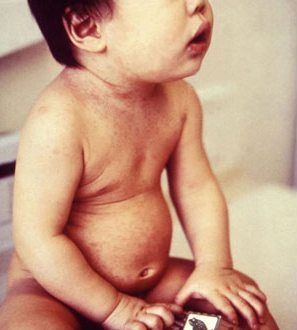
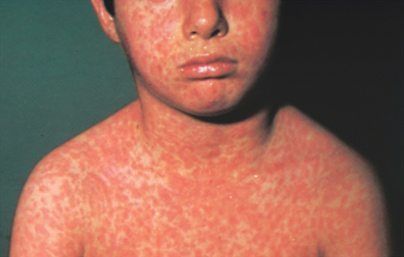

Measles
Measles (a.k.a. First Disease)
Culprit:
Virus (vaccine available)
What does it look like?
Symptoms begin roughly 10 days after exposure. An infected infant will have severe cold symptoms and a high fever for about 4 days. During these four days (while the fever is high) the child develops Kolik spots, which are white spots with a bright red background inside the mouth. The spots start inside the cheek and the spread to the lower lip. Then over 3 days a red body rash becomes evident, starting at the ears and hairline and then spreading to the face, torso, arms and legs.
What do you do?
There is no specific treatment, though your pediatrician will be on the lookout for secondary complications.
How contagious is this sucker?
Extremely! Measles travels via direct touch and droplets (sneeze/cough/exhale) and that sucker is airborne as well.
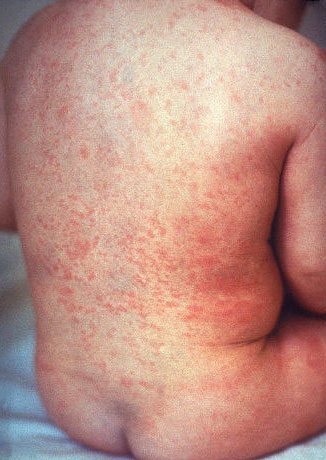

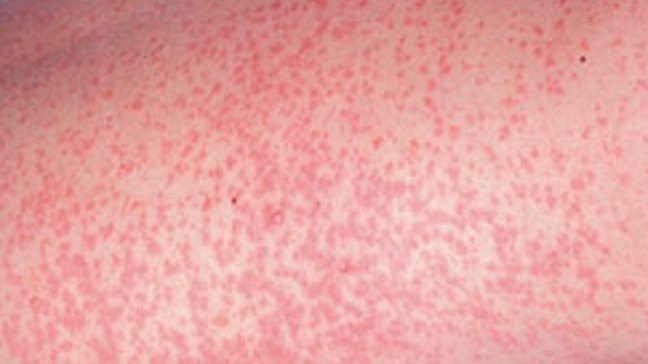
Rubella
Rubella (a.k.a German measles)
Culprit:
Virus (vaccine available)
What does it look like?
It’s a very mild illness for babies. (It’s a bigger risk for pregnant women.) They get a runny nose, swollen glands, and a red, raised rash that starts on the face and spreads down from there. Some people get only one or none of these symptoms.
What do you do?
Most people don’t feel too crummy and you just have to keep baby comfortable.
How contagious is this sucker?
It is very, very contagious if you aren’t immune. An infected person is contagious for up to two weeks before developing symptoms and almost a week after symptoms appear. Rubella is spread through direct contact, droplets, and airborne transmission.

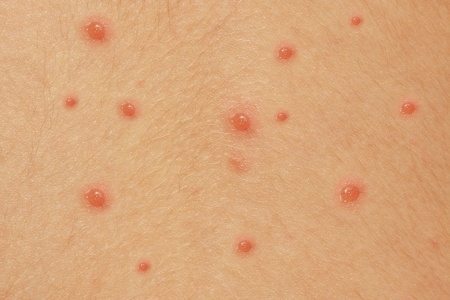
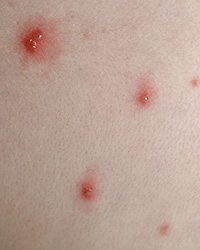
Chicken Pox
Chicken Pox (a.k.a. Varicella, Zoster)
Culprit:
Virus (vaccine available.)
Typically babies under 1-year-old whose mothers are immune do not contract chicken pox.
What does it look like?
Infected kids feel tired and get a fever, then they break out in a whole-body rash of fluid-filled, itchy blisters that pop up in clusters. The average person gets 350 blisters.
What do you do?
Though the blisters are VERY itchy, the illness itself is pretty mild. The danger lies in secondary complications of chicken pox, as the open blisters are inviting to bacterial infections, such as impetigo and strep. Oatmeal baths or topical lotions (like Calamine) can help reduce the itching.
How contagious is this sucker?
Chicken pox is contagious, spread by respiratory droplets and the fluid inside the skin lesions. People are contagious 24 hours before the rash appears and continue to be contagious until the blisters scab.
(Editor’s note: I was exposed to chicken pox throughout my childhood and never got it so I felt pretty smug thinking I was some immune mutant. Then at 28-years old – BAM – I got it out of nowhere and it was heinous. Absolutely awful.)
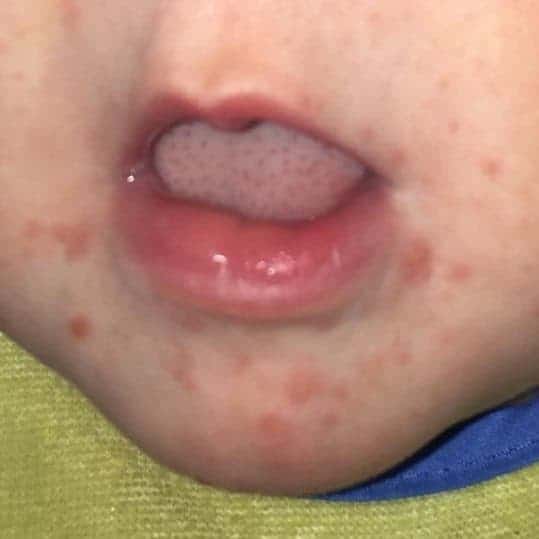
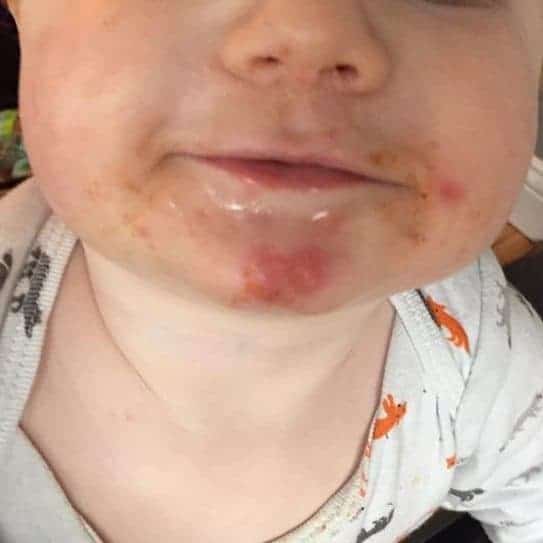

Staph
Staph
(including impetigo, cellulitis, conjunctivitis, blocked tear duct)
Culprit:
Bacteria, common on the skin and in the nose
What does it look like?
Staph bacteria are always hanging out on our bodies, but only become problematic when some of that bacteria gets under the skin via a scraped knee, bug bite, raw bum, etc. The appearance of the rash depends on the infected location. The skin can get blistered and then yellow and crusty. Sometimes there is pus, too. (In the case of a blocked tear duct or conjunctivitis, the eye becomes red and goopy with pus.)
What do you do?
Your ped can treat impetigo with a topical or oral antibiotic.
How contagious is this sucker?
Yes, via direct contact.
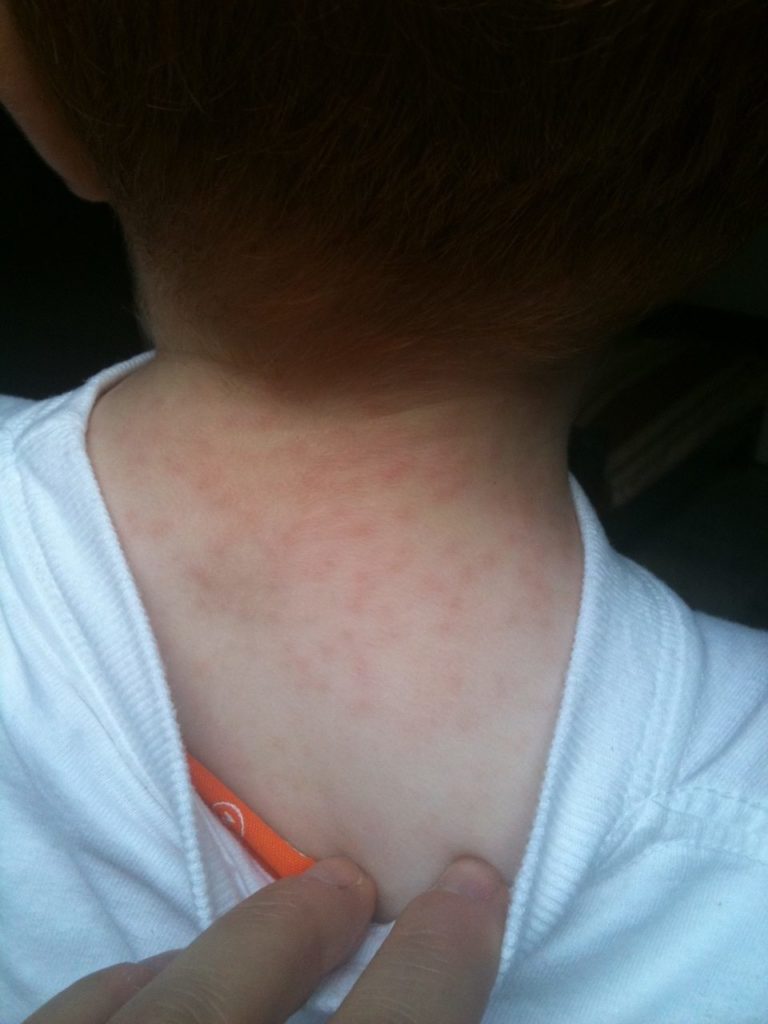


Roseola
Roseola (a.k.a. Herpes virus 6)
Culprit:
Virus
What does it look like?
Most people have this version of herpes virus in their bodies and shed it constantly. Babies are born with immunity from their mothers that typically lasts 9-12 months, at which point BOOM: roseola.
It begins with a high fever over 102 for about four days, with no other symptoms or signs of infection. The fever breaks suddenly and then within a couple hours a flat, red, blotchy rash appears at the torso and spreads to the neck, arms, back, and legs. The rash blanches (turns white) when you press on it and is not itchy or uncomfortable.
What do you do?
No treatment necessary for the rash, though your ped may suggest acetaminophen or ibuprofen to lower the fever. By the time you see the rash and finally know why your baby was so uncomfortable his fever is gone and he’s probably feeling pretty great again.
How contagious is this sucker?
We are technically all contagious all the time since most adults have been infected and constantly shed this virus via saliva, so a baby with roseola isn’t any more contagious than you.

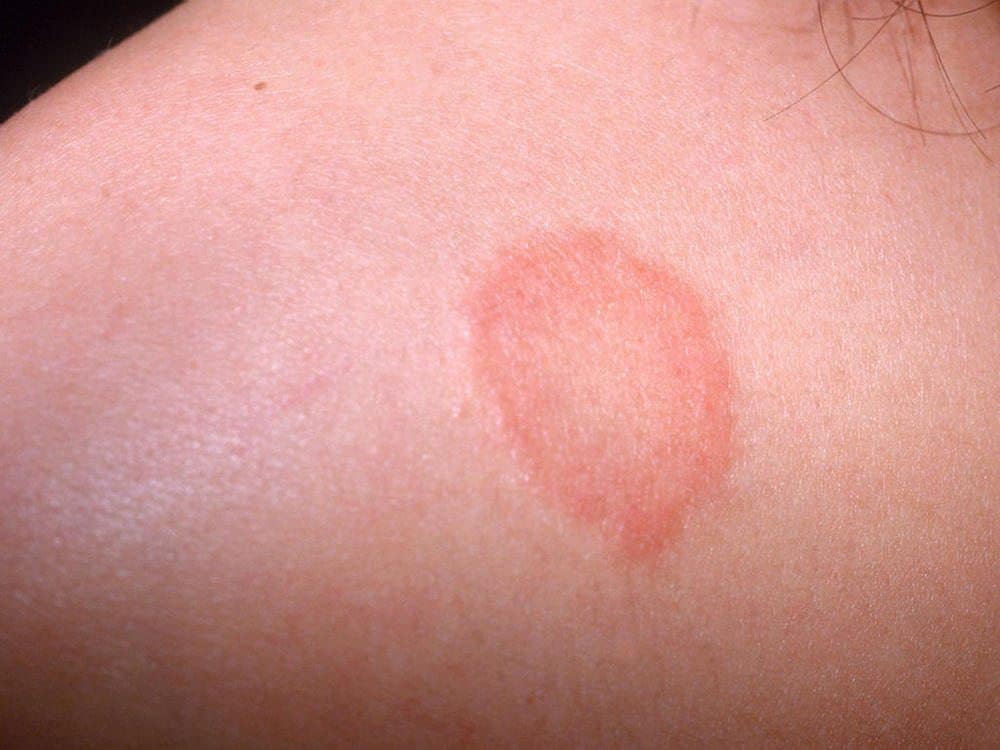
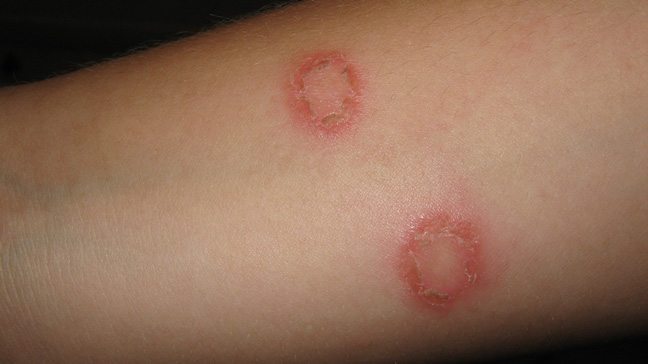
Ringworm
Ringworm
Culprit:
Fungus
What does it look like?
This is the same common fungus that causes athlete’s foot, but when you find it on your baby’s skin it’s called ringworm. No, there is no worm involved. It’s a dry, raised, round patch of skin that can be a little itchy.
What do you do?
Once you’ve confirmed the rash is ringworm with your pediatrician you can treat it with a topical antifungal cream.
How contagious is this sucker?
Ringworm is contagious via direct contact with others who have it, even the family cat or dog.
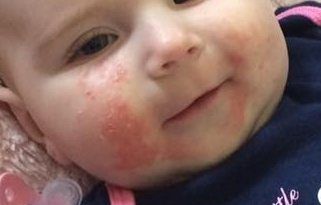
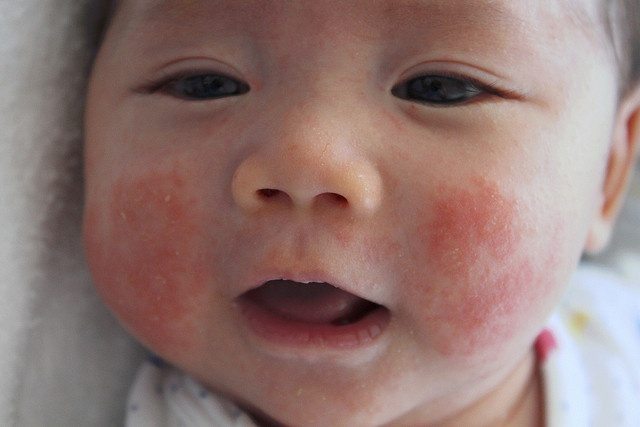
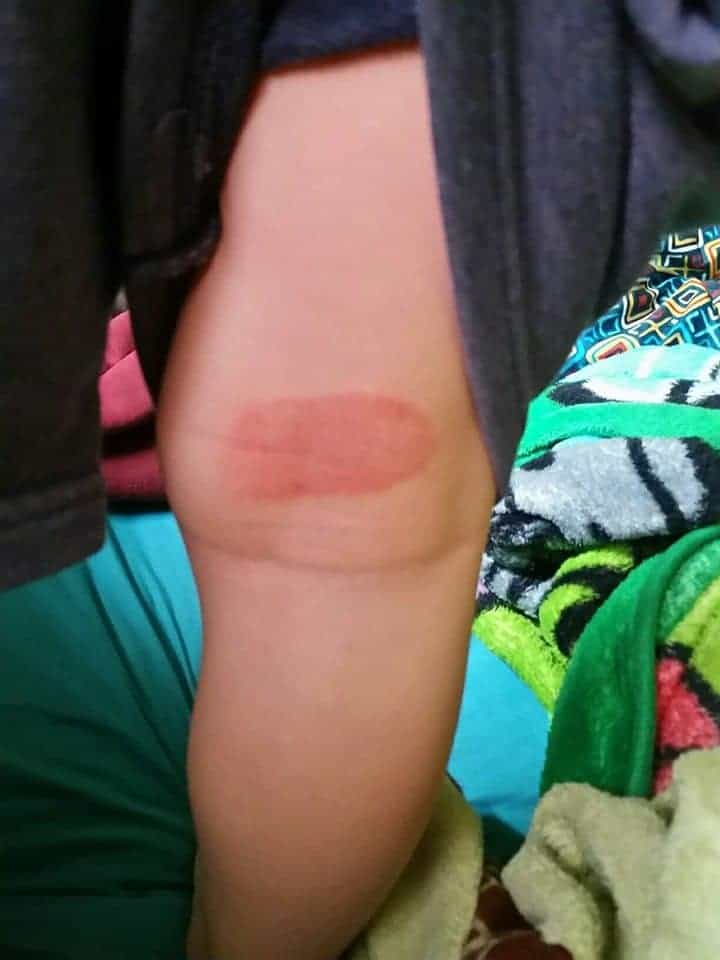
Eczema
Eczema
Culprit:
Allergy
What does it look like?
Eczema is a broad, catch-all term to describe dry, itchy, scaly skin patches. Eczema crops up in babies with sensitive skin—their skin becomes irritated, they scratch, and then the rash appears. Eczema also frequently occurs as a reaction to an irritant (such as soap or laundry detergent) or as a reaction to a food allergy.
What do you do?
The first step is to remove any possible trigger, such as the food or irritant that you think is causing the rash. After that, keeping the skin from getting too dry and itchy is key. Give frequent but short, warm baths with a small amount of moisturizing soap and apply a thick, greasy cream (there are many marketed to treat eczema) the second your baby gets out of the tub to lock in the moisture. You can also apply a 1% hydrocortisone cream to reduce flare-ups. Avoid antibacterial soap and bubble baths—both of which can aggravate eczema.
How contagious is this sucker?
Not contagious.


Penicillin allergy
Penicillin allergy
Culprit:
Allergy (duh)
What does it look like?
A full body non-itchy rash of red, flat patches that appear during a course of antibiotics, sometimes accompanied by diarrhea or nausea
What do you do?
Take your babe to the doctor to have the rash confirmed and documented.
How contagious is this sucker?
Not contagious.
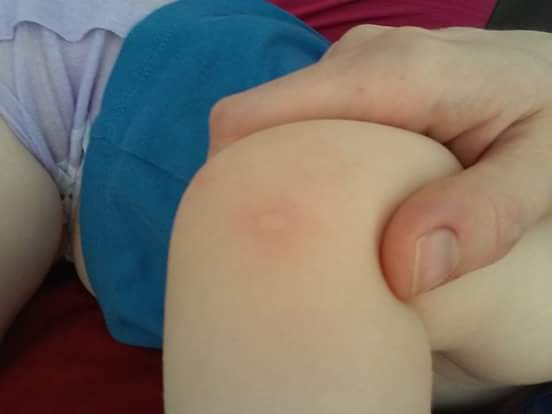
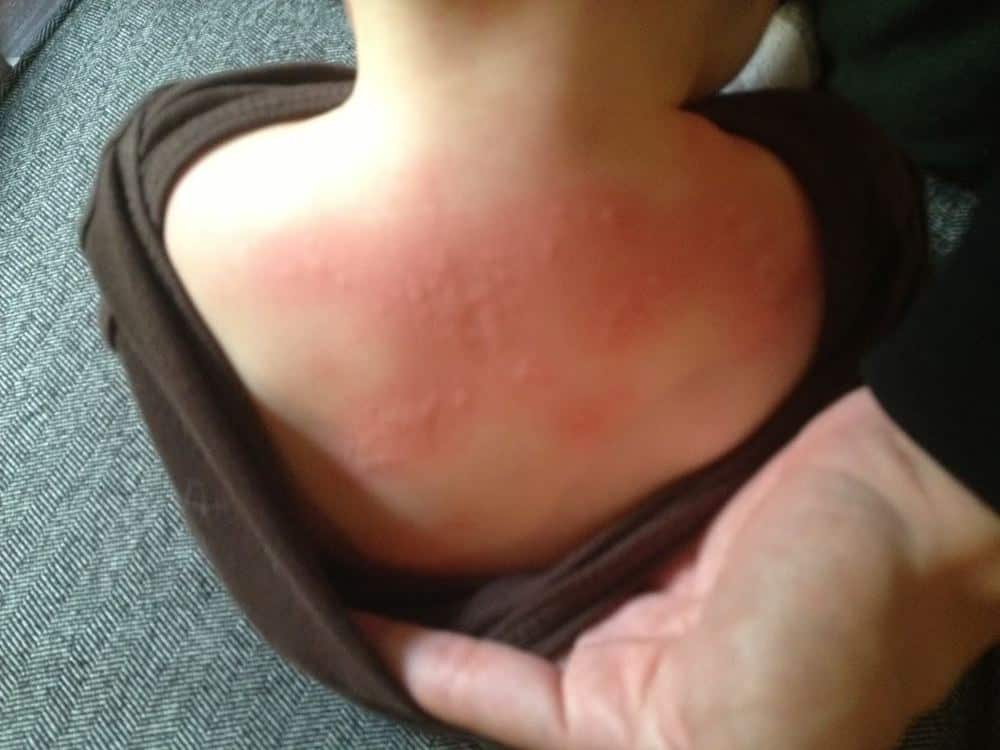
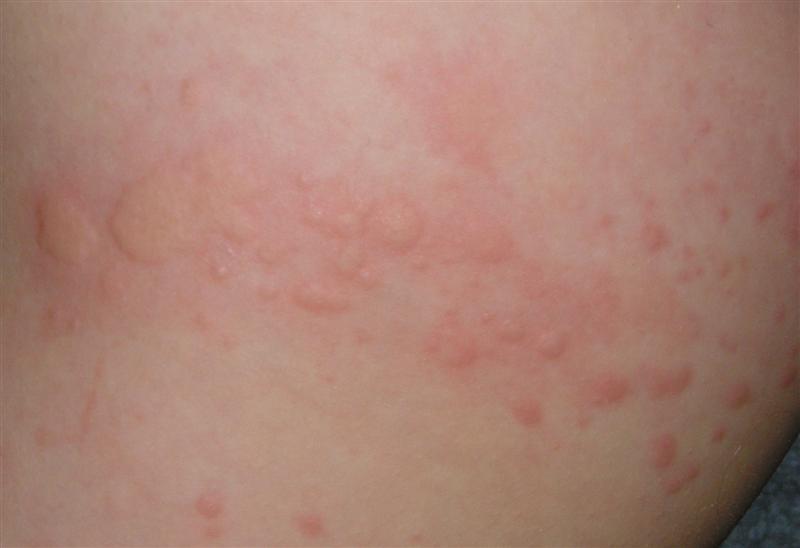
Hives
Hives (dermatitis)
Culprit:
Allergy
What does it look like?
Hives are the name of the rash that appears when the body releases histamine. They look a lot like a mosquito bite with red circles around them or a flat red patch with a raised border. They can be big or small and they are super itchy! Hives can be caused by a reaction to food, medication, or an illness.
What do you do?
If your baby is having any trouble breathing call 911! If breathing is fine you can treat them topically with calamine lotion. You may also want to give baby some liquid Benadryl, but call your pediatrician before you try that.
How contagious is this sucker?
Not contagious.
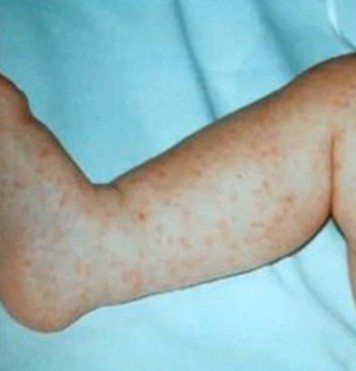
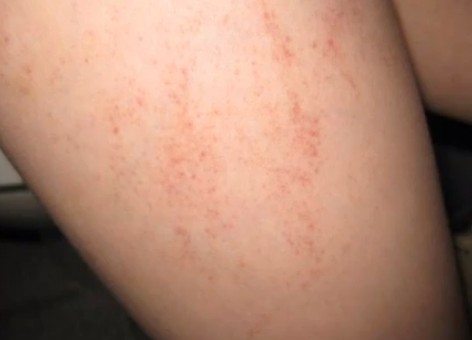
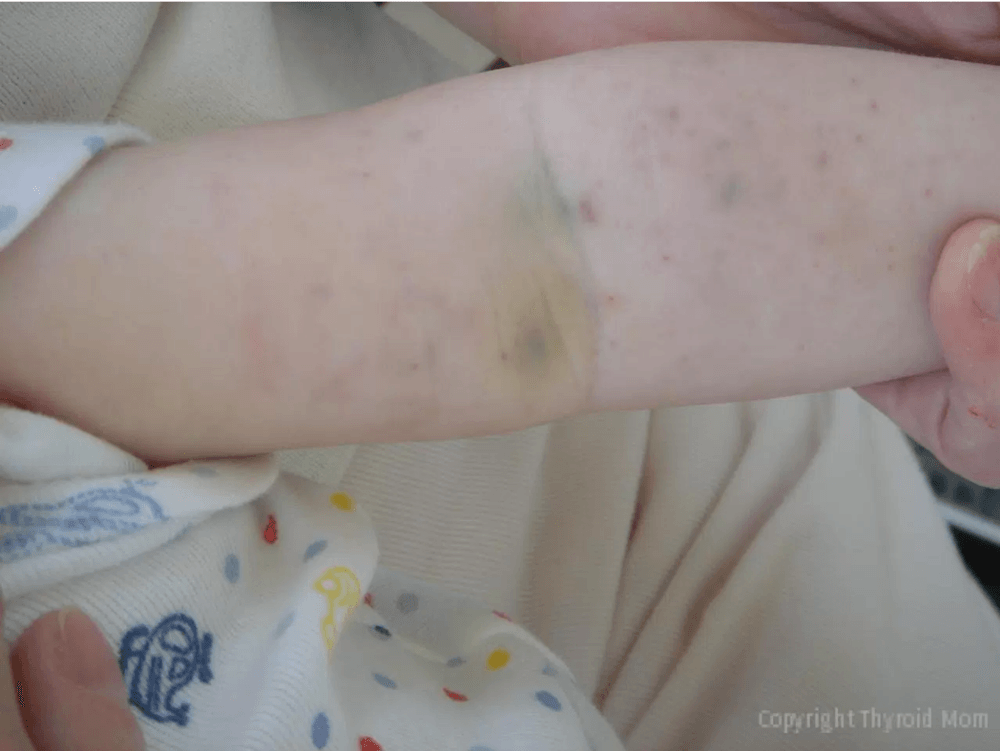
Petechiae
Petechiae
Culprit:
Illness
What does it look like?
Petechiae are flat, pinpoint, purple dots that appear on the skin. They do not blanch (the color remains when you push down on them). This bruise-y rash is caused by broken blood vessels and could be caused by forceful coughing/vomiting, but it could also be an indicator of low platelet count, which is a serious problem.
What do you do?
You need to see your doctor ASAP to determine the cause.
How contagious is this sucker?
Not contagious.
Diaper rash (from irritated skin)
Culprit:
Baby life or allergy
What does it look like?
Flat, red patches of skin on the diaper area caused by pee and poop irritating the skin. Some diaper rashes are also caused by food sensitivity/allergies. If the skin gets too raw and opens, baby is then susceptible to some of those bacterial rashes we discussed above.
What do you do?
Air out the area so it can get completely dry (have baby do diaper-free time on a towel) and then use a diaper cream at every diaper change.
How contagious is this sucker?
Not contagious.
Diaper rash (from yeast)
Culprit:
Infection
What does it look like?
Yeast loves to camp out in the dark, damp diaper area! Yeast can crop up after a course of antibiotics, too, since the drugs kill the good bacteria that typically keep yeast at bay. It looks like a really raw bum with white scales or a pimply rash surrounding it.
What do you do?
Check in with your pediatrician and get an anti-yeast cream to apply to the area.
How contagious is this sucker?
Not contagious.
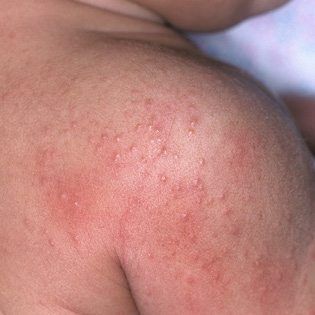
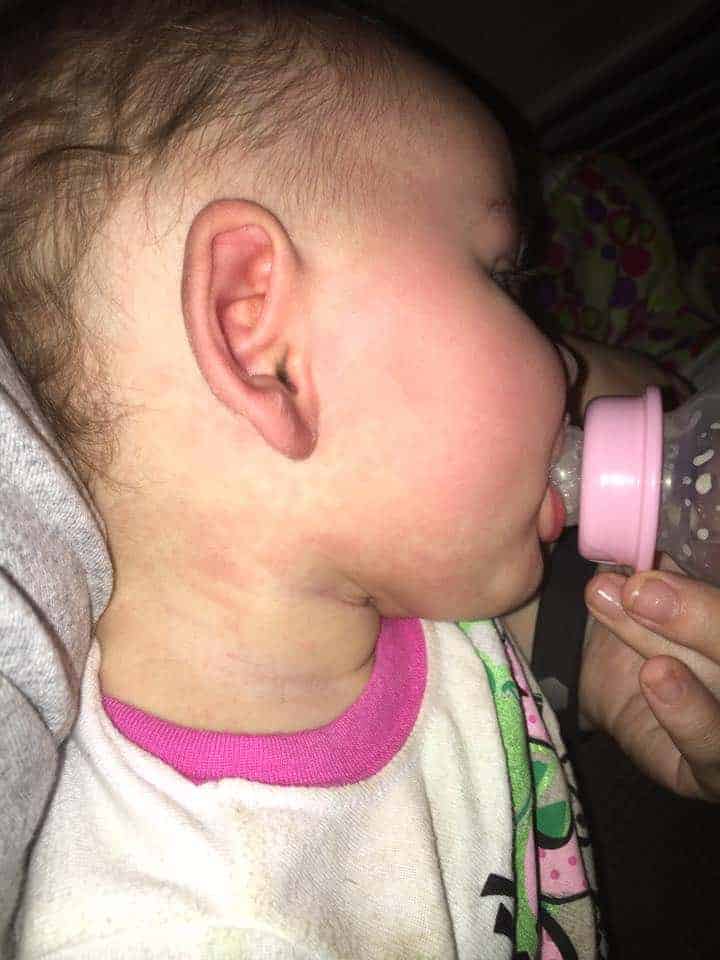
Heat rash (a.k.a. prickly heat)
Heat rash (a.k.a. prickly heat)
Culprit:
Baby life
What does it look like?
Baby sweat glands aren’t as developed as bigger kids and adults and they can get clogged so on a hot/humid day you may see tiny, red bumps on your baby. They show up on the face, folds of the neck, and other areas.
What do you do?
Naked time or loose, cool clothing is the way to go. Sit baby in front of a fan to cool down.
How contagious is this sucker?
Not contagious.
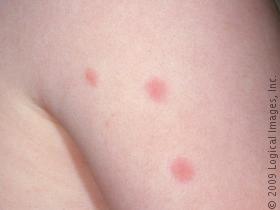
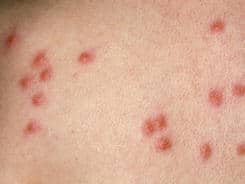
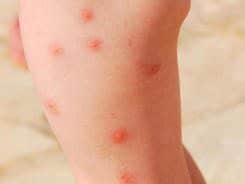
Insect Bites
Insect Bites
Culprit:
Allergy
What does it look like?
Well, this could be a post on its own considering how many things could bite you, plus, it varies from region to region. Mosquito, fleas, bed bugs, etc. often bite in multiple spots which could throw them into the rash confusion arena.
What do you do?
If it’s just a run of the mill bite, they go away on their own after a few days.
How contagious is this sucker?
Not contagious.
Whew! That’s a lot of rashes and a lot of googling that I wish I could unsee.
We decided to exclude Fifth Disease because it mainly affects school-aged kids, and Poison Ivy because it’s very rare under one year. Let me know if we missed anything or if you have any pictures (preferably diagnosed by a doctor) that we could add to help other parents down the road.
Our next reco: Diaper Rash Guide – Causes, Treatments and Remedies

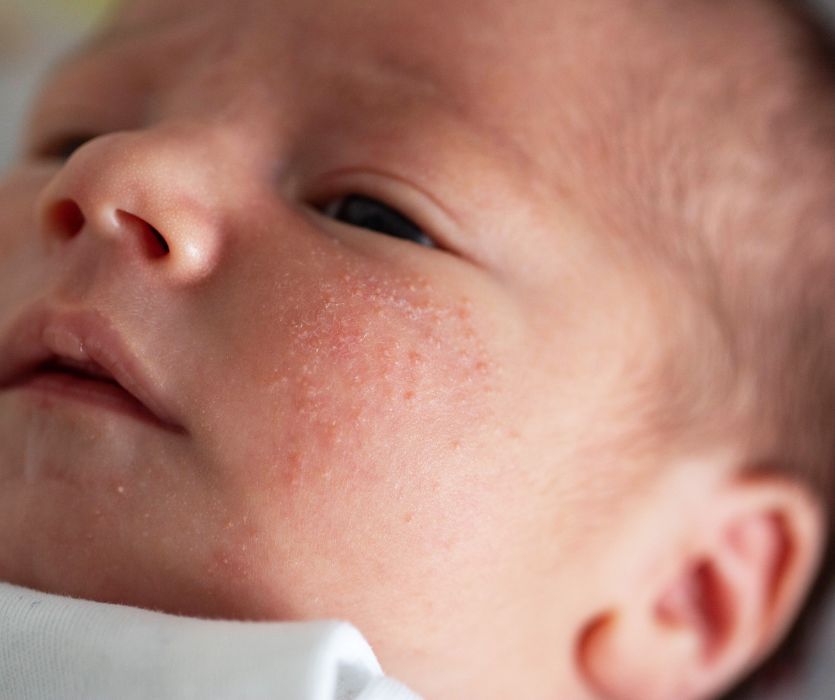
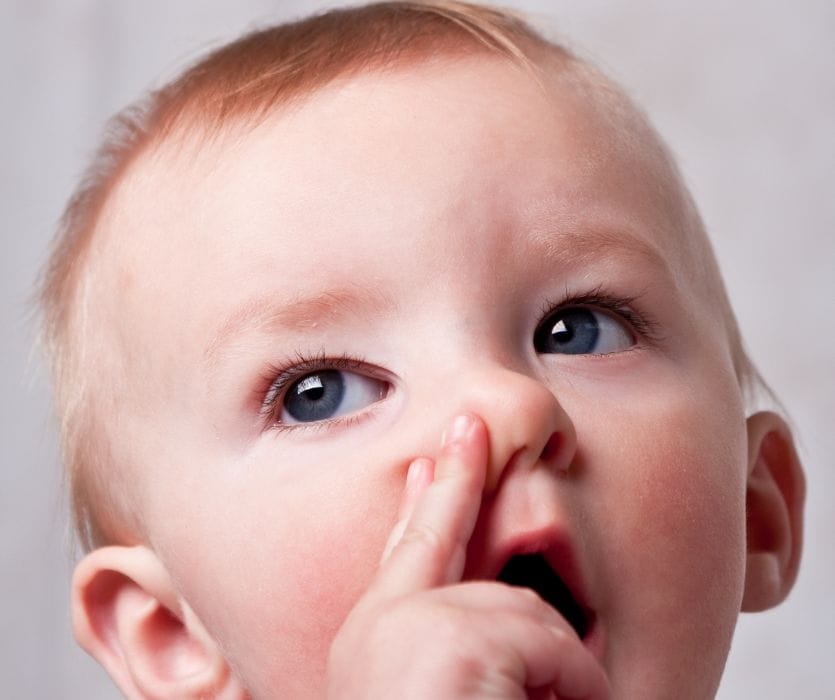
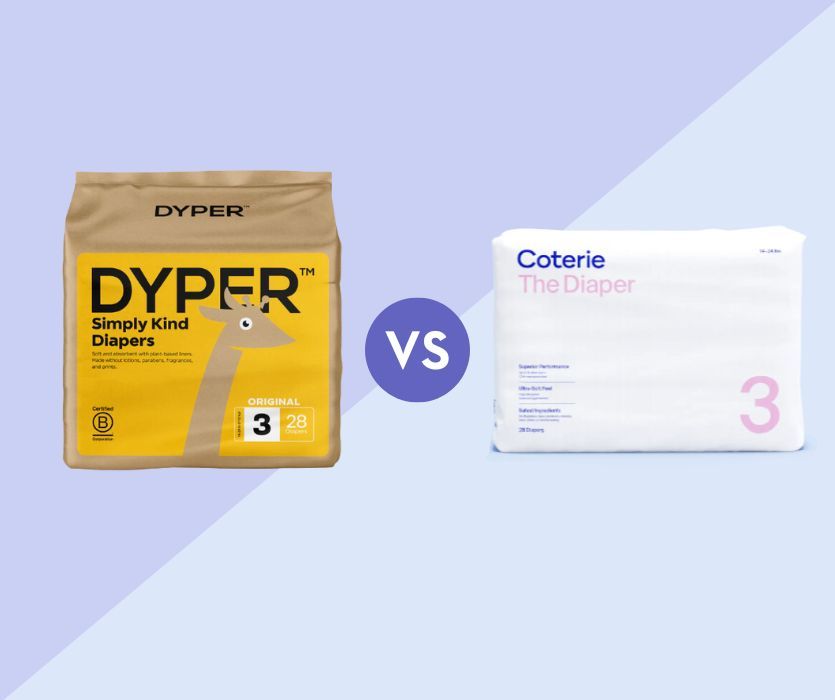
Leave a Comment